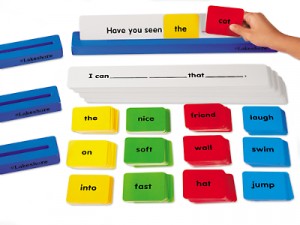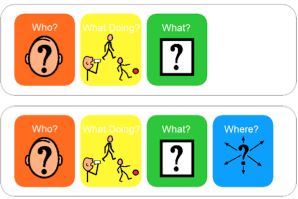
Sentence Building in Children Aged Below 5 Years
Sentence Building in Children Aged Below 5 Years
Q. When does sentence building in children start?
A child as young as 1.5 years can speak in a meaningful sentence using 2 words (Eg: My doll). As in when a child develops more vocabulary, she/he will start using longer and longer sentences. We can measure sentence length in terms of Mean Length of Utterance (MLU) i.e.number of ‘Morphemes’ present in a sentence. Morpheme is the basic meaningful structure in a sentence. Eg: In a sentence ‘This is my doll’, there are 4 Morphemes. Typically the MLU corresponds closely with the increase of age in children.
| Stage | MLU | Approximate Age (In Months) |
| I | 1.0-2.0 | 12-26 |
| II | 2.0-2.5 | 27-30 |
| III | 2.5-3.0 | 31-34 |
| IV | 3.0-3.75 | 35-40 |
| V | 3.75-4.5 | 41-46 |
| V+ | 4.5+ | 47+ |
Brown (1973)
Q. How to increase sentence length or MLU?
Initially typically developing child forms sentences using incorrect grammar. Later they get the feedback from their surrounding regarding the correct sentence forms, structures and grammar. The main catalysts to improve sentence building are
- Vocabulary: At the age of 20 -22 months, a child can start combining words into simple sentences (Eg: daddy come, i go etc). At this stage the child will have a vocabulary of around 30-40 words. Where as to express meaningfully a child will require more words, different combination of structures (Eg: Noun+Verb, Noun+adjectives, Verb+Adjectives etc). Hence, as in when the vocabulary increases the sentence structure would become better and longer.
- Improving Grammar: Usually children with short MLUs will lack in the grammatical markers. This can significantly affect MLU. For example, a child who says “I will go in the bus” would get 6 morphemes but a child who says “I go bus” gets only 3. Hence it is very important to emphasise on the grammatical markers.
Read a detailed blog on Top learning websites for speech delays
Q. What are the techniques to increase MLU?
- Expansion: When a child expresses himself in shorter phrase or sentence expand adding one more word. Eg: If the child says ‘want water’, you can model saying ‘I want water’.
- Request to Response transfers: The child is first asked to clarify their request
- Eg: Instructor: Which book do you want?
- Child: Story book.
- Instructor: Tell me about this.
- Child: (It’s a) story book.
- Building response combinations: This involves using responses the child has mastered to “build” longer and longer sent.
- Eg: Instructor: What’s the baby doing?
- Child: Playing (mastered response)
- Instructor: What’s she playing with? (touching the ball)
- Child: doll (mastered response)
- Instructor: That’s right! The baby is playing with the doll. What’s happening?
- Child: The baby is playing with the doll (echoic)
- Instructor: Good job! Tell me what’s happening? (transfer trial)
- Child: The baby is playing with the doll. (BIG reinforcement!)
- Once the child is able is consistently using the phrases to respond, they can be combined to form even longer utterances.
- Eg: Instructor: What’s happening?
- Child: The dog is barking.
- Instructor: Whose dog?
- Child: My neighbour’s dog.
- Instructor: Is it a big dog?
- Child: No, it is a small dog.
- Instructor: Tell me about this.
- Child: The neighbour’s small dog is barking.
What strategies could be used?
- Verbal aids:
- In this method the child is taught to repeat the sentence after the instructor and prompt to use it independently. If the child misses any part of the newly learnt sentence, emphasis should be on the missing part of the sentence. Eg: There is a ball. If the child misses ‘is’, then instructor can correct saying ‘There isss a ball’.
- Instructor can split up the sentence into number of smaller chunks, ‘there is’ and ‘a ball’.
- Instructor can use pausing, wherein the child is expected to fill in the word
- Visual aids:
- A number strip could be used to show how many words are present in a sentence.
- Finger counting to indicate the exact number of words
- Colourful semantics is a very effective method created by Alison Bryan. Colourful semantics reassembles sentences by cutting them up into their thematic roles and then colour codes them. The approach has 4 key colour coded stages. There are further stages for adverbs, adjectives, conjunctions and negatives.
- WHO – Orange
- WHAT DOING – Yellow
- WHAT – Green
- WHERE – Blue
- Written aids: The sentence which is difficult for the child could be written down. As in when the child say each word, point to the words respectively. The child will be reminded if he misses a particular word.
View this post on Instagram
- Birth – 1 Year : Speech & Language Milestones - December 22, 2022
- Amazing Apps for Speech therapy - October 1, 2018
- Childhood Apraxia of speech (CAS) - September 8, 2018



Leave a Comment
(0 Comments)